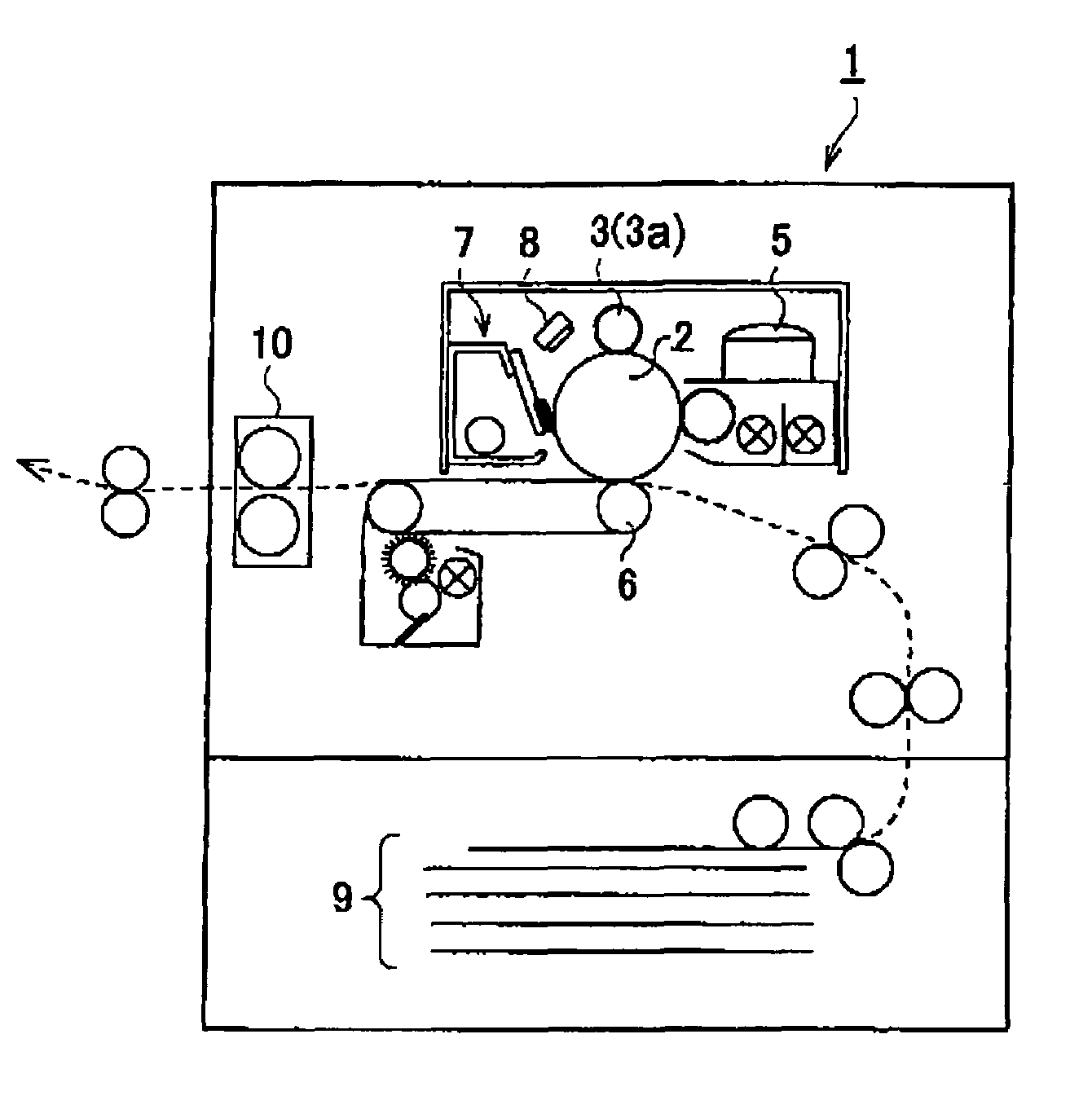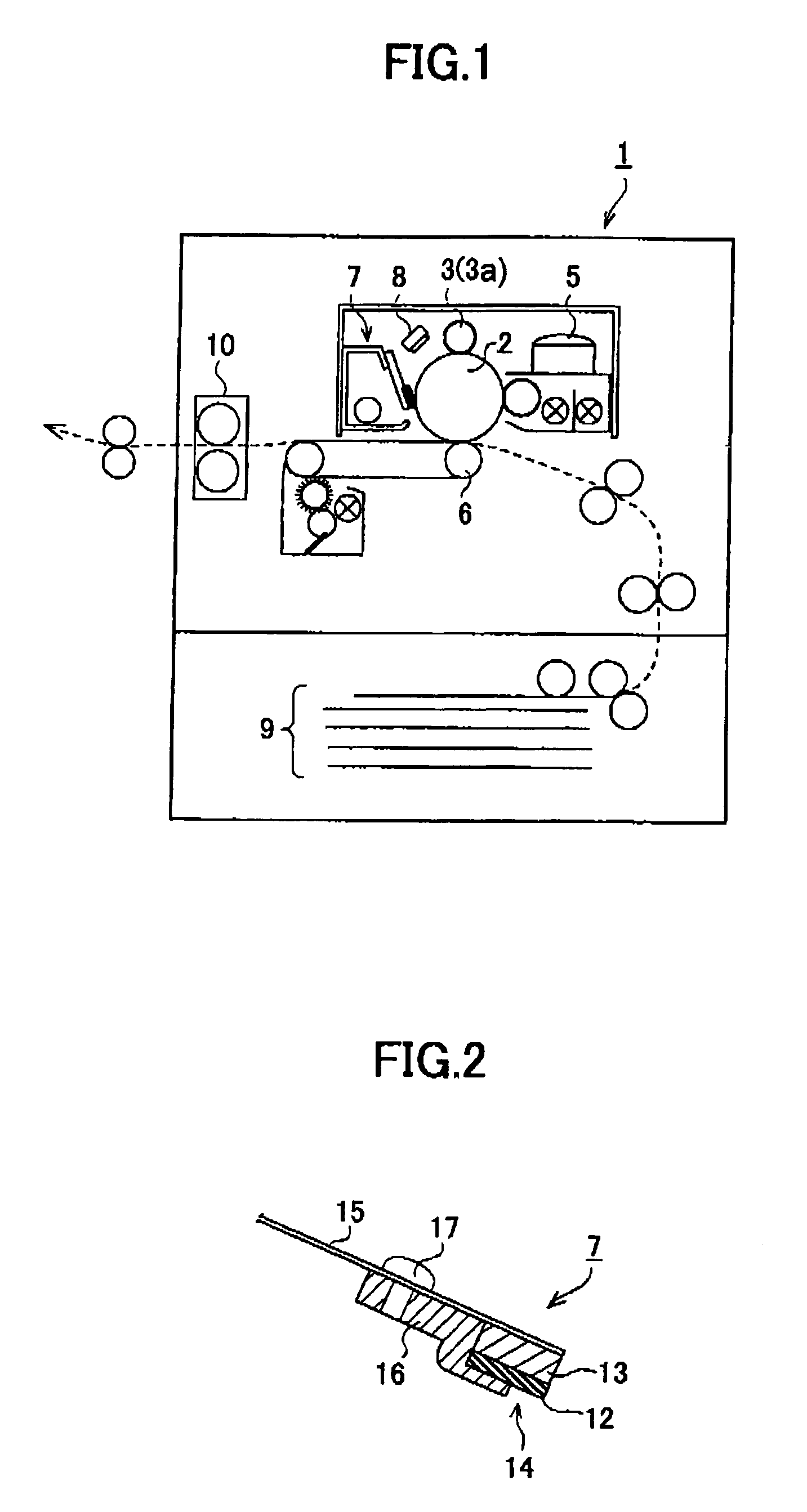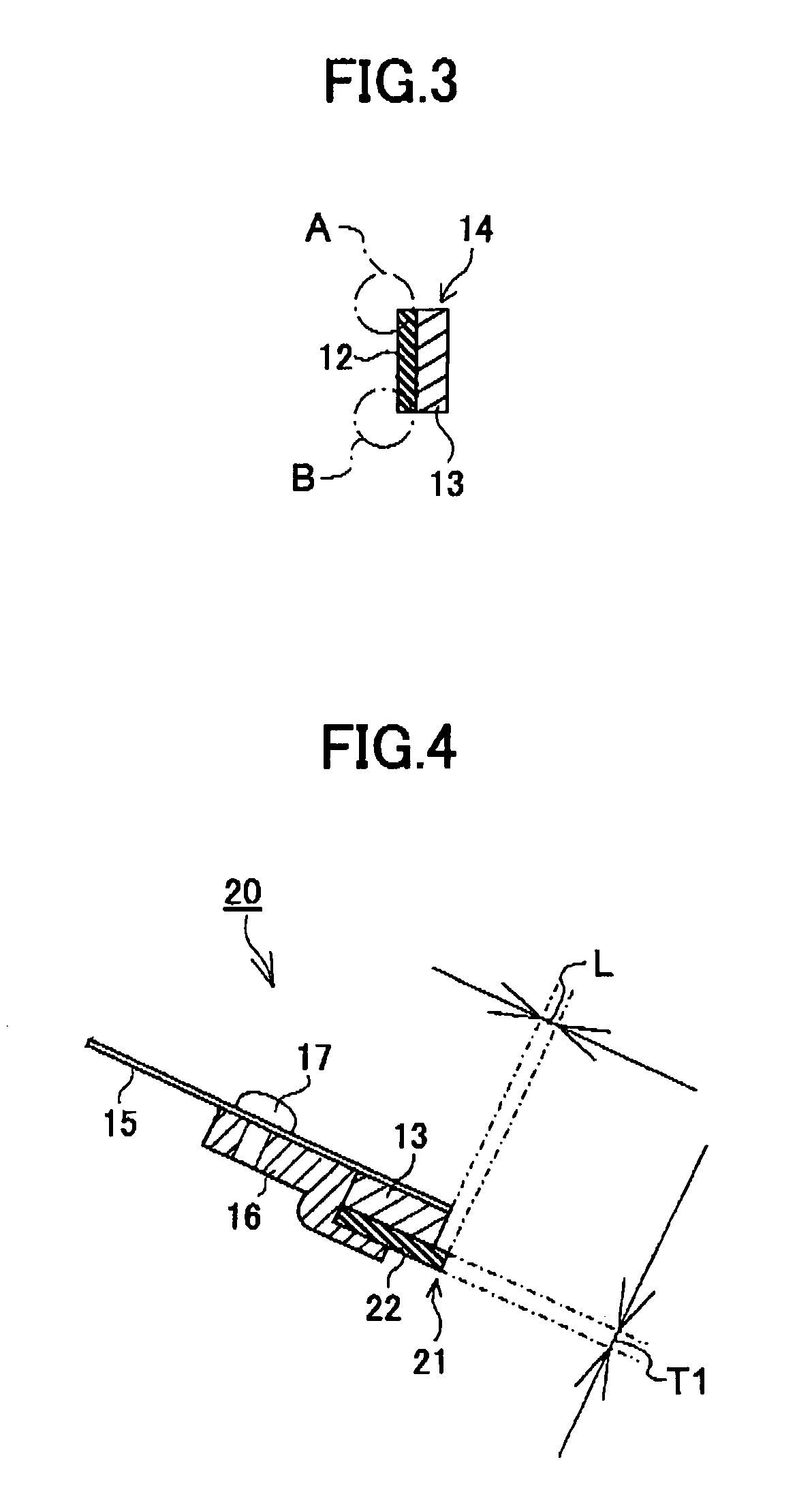Cleaning apparatus, image forming apparatus, and process cartridge
a technology of cleaning apparatus and process cartridge, which is applied in the direction of electrographic process apparatus, instruments, optics, etc., can solve the problems of insufficient cleaning of cleaning apparatus using electrostatic method, inability to improve image quality, and affecting the cleaning effect, so as to reduce friction
- Summary
- Abstract
- Description
- Claims
- Application Information
AI Technical Summary
Benefits of technology
Problems solved by technology
Method used
Image
Examples
first embodiment
[0052]FIG. 1 is a schematic drawing showing an entire structure of an image forming apparatus provided with a cleaning apparatus according to the present invention.
[0053]In an image forming apparatus 1 shown in FIG. 1, a charging apparatus 3 (charging roller 3a) which uniformly charges a surface of an image carrier drum (image carrier) 2, an exposing apparatus (not shown) which forms a latent image on the uniformly charged surface of the image carrier drum 2, a developing apparatus 5 which forms a toner image by applying a toner (charged developer) to the latent image on the surface of the image carrier drum 2, a transferring apparatus 6 which transfers the toner image to a recording sheet (not shown) by using, for example, a transfer belt, a transfer roller, or a charger, a cleaning apparatus 7 which removes toner remaining on the image carrier drum 2 after the transfer of the toner image, and a charge removing apparatus 8 which removes electric potential remaining on the image car...
second embodiment
[0066]In a cleaning apparatus according to the present invention, cleaning performance is further improved by setting the projection of the blade member 22 from the supporting plate 15 of a blade chip 21 to the outside in a width direction (distance from the distal end of the supporting plate 15 of a blade chip 21 to the distal end of the blade member 22) to a prescribed degree (See FIG. 4).
[0067]That is, in cleaning the image carrier drum 2, the blade member 22, serving as a cleaning member, is required to have a function of blocking the toner remaining on the image carrier drum 2. The blockage, which is created by abutting a tip portion of the blade member 22 against the image carrier drum 2, is determined by the degree of hardness (e.g. degree of hardness of rubber) of the blade member 22 and the force of the tip portion of the blade member 22 abutting against the image carrier drum 2. Therefore, in a case where the blade member 22 does not project beyond the distal end of the re...
third embodiment
[0075]With the cleaning apparatus 25 according to the present invention, the frictional force generated between the blade member 22 and the image carrier drum 2 can be reduced by applying vibration to the blade chip 21 (blade member 22). Accordingly, the wear of the blade member 22 as well as that of the image carrier drum 2 can be reduced, to thereby expand its longevity. Furthermore, since frictional force is reduced in such manner, the curling of the blade (member) can be prevented. Therefore, the blade edge (distal end shape of the blade member 22) can be prevented from being deformed. Accordingly, the blade member 22 is able to steadily provide a satisfactory cleaning performance. Furthermore, the image carrier drum 2 can be rotatively driven steadily since the frictional load applied to the image carrier drum 2 is reduced. Accordingly, image forming operations that are associated with the rotation of the image carrier drum 2 can also be performed steadily. As a result, image q...
PUM
 Login to View More
Login to View More Abstract
Description
Claims
Application Information
 Login to View More
Login to View More - R&D
- Intellectual Property
- Life Sciences
- Materials
- Tech Scout
- Unparalleled Data Quality
- Higher Quality Content
- 60% Fewer Hallucinations
Browse by: Latest US Patents, China's latest patents, Technical Efficacy Thesaurus, Application Domain, Technology Topic, Popular Technical Reports.
© 2025 PatSnap. All rights reserved.Legal|Privacy policy|Modern Slavery Act Transparency Statement|Sitemap|About US| Contact US: help@patsnap.com



